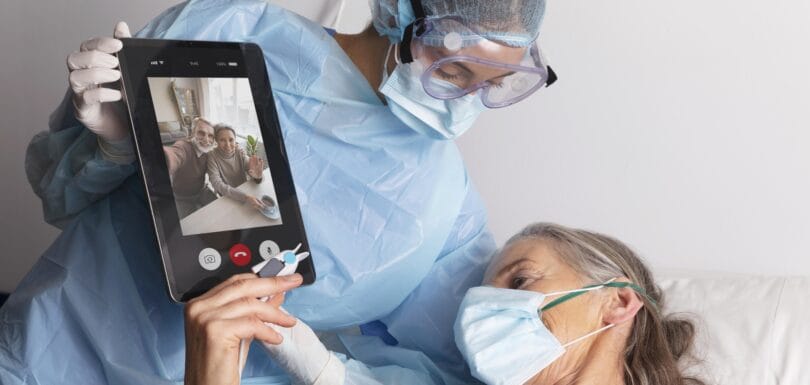10 Outstanding Roles of Remote Staff in Post-Surgery Follow-Ups
The Role of Remote Staff in Handling Post-Surgery Follow-Ups Life after surgery is not just about healing a wound it’s about building confidence, regaining strength, and making sure the patient never feels alone in the process. Yet, post-surgery care is where many gaps show up. Missed follow-ups, forgotten medications, and confusing paperwork often leave both patients and providers stressed. This is where remote staff in post-surgery follow-ups step in as a real game-changer. With the right team, clinics and hospitals can make recovery smoother, safer, and more reassuring. Whether it’s through virtual medical assistant services, healthcare virtual assistant support, or a virtual assistant for medical practice, patients get the care they deserve even outside the hospital walls. At Remote Medical Assistant, we make this vision practical by providing services like appointment scheduling, insurance support, and EMR management. These offerings are tailored to help both providers and patients breathe easier during the recovery phase. In this blog, let’s explore the 10 outstanding roles that remote staff play in making post-surgery follow-ups not just effective, but truly patient-centered. 1. Coordinating Post-Discharge Instructions One of the trickiest parts of recovery is the moment a patient leaves the hospital. Discharge papers are often packed with medical terms, schedules, and care routines that can overwhelm patients and their families. Remote staff simplify this process. They review instructions with patients in plain language. They clarify doubts in real-time, saving countless phone calls to doctors. They bridge communication gaps, ensuring patients never feel left on their own. Think of them as a supportive guide who turns complex care notes into everyday actions. Without this, many patients risk misunderstanding vital instructions, which can delay healing. Even small clarifications here can make the difference between a smooth recovery and a stressful setback. 2. Tracking Medication Adherence A big reason for hospital readmissions is missed or incorrect medication use. Here’s where remote staff show their real value. They create structured routines for patients, using gentle reminders through calls, texts, or emails. They don’t just track if a pill was taken; they notice patterns. If a patient is constantly late with doses, remote staff raise an alert before things get worse. Unlike a rushed clinic check-up, they can take the time to ask, Why are you skipping your meds? Is it side effects, cost, or simply forgetting? This hands-on approach is exactly what makes a virtual medial office assistant so vital to keeping recovery safe and steady. It turns medication from a confusing chore into a manageable, everyday habit. 3. Scheduling and Managing Follow-Up Appointments Follow-up visits are the backbone of post-surgery recovery. Yet, many patients forget or avoid them because they can’t keep up with the schedule. Remote staff solve this challenge by: Coordinating calendars for both providers and patients. Sending reminders ahead of time. Handling rescheduling smoothly when life gets in the way. They act as a steady anchor between the medical team and the patient’s routine. When supported by a virtual assistant for healthcare, clinics don’t lose valuable time chasing down no-shows, and patients don’t risk complications from missed check-ups. This consistency makes the recovery journey much less stressful for everyone involved. 4. Monitoring Patient Recovery Progress Healing is never a straight line. Some patients bounce back quickly, while others face bumps along the way. Remote staff play a key role here by regularly checking in on pain levels, mobility, sleep quality, and even mental well-being. By collecting these updates, they can spot early signs of trouble like swelling, fever, or worsening pain and alert doctors promptly. This proactive care often prevents small issues from spiraling into emergencies. Here, a virtual medical administrative assistant becomes more than just support; they are the eyes and ears of providers outside the clinic walls. It’s like having a watchful companion who ensures nothing slips through the cracks. 5. Assisting with Wound Care Guidance Wound care can be intimidating for patients and caregivers. Bandages, cleaning routines, and infection risks often lead to confusion. Remote staff make wound care more manageable by: Giving step-by-step guidance through telehealth platforms. Sharing reminders about dressing changes. Encouraging patients to send pictures for quick assessments. By taking away uncertainty, they reduce the risk of infections and ensure patients stick to their care plan. This is one area where the virtual assistant in healthcare shines, blending professional oversight with day-to-day support. Patients feel reassured knowing someone is watching over their healing process closely. 6. Handling Insurance and Billing Queries Let’s be honest: medical bills and insurance paperwork can feel like a second surgery. Patients fresh out of the hospital are already vulnerable, and endless forms can make the process worse. Remote staff reduce this stress by helping patients: Understand their coverage. File claims correctly. Resolve billing errors without frustration. With a medical virtual assistant services setup, patients spend less time on hold with insurance companies and more time focusing on their healing. This not only saves time but also gives families peace of mind during a sensitive period. 7. Collecting and Managing Patient Feedback Good healthcare always listens. After surgery, patients have plenty to share about care quality, communication, and recovery support. Remote staff step in to gather this feedback in a structured way. They design quick surveys, reach out personally, and organize responses for providers to review. This process doesn’t just improve care; it shows patients their voices matter. And when powered by healthcare virtual assistant services, feedback loops become easier, more consistent, and truly actionable. By analyzing this feedback, staff can spot trends, address concerns quickly, and even suggest small changes that make a big difference in patient satisfaction. It also helps providers feel confident that their patients are being heard and supported every step of the way. Over time, this continuous feedback helps providers adapt and grow. 8. Coordinating Lab Results and Reports Test results can bring either relief or stress. The worst part is waiting too long to hear back. Remote staff fix this delay by keeping tabs on labs, chasing results, and





